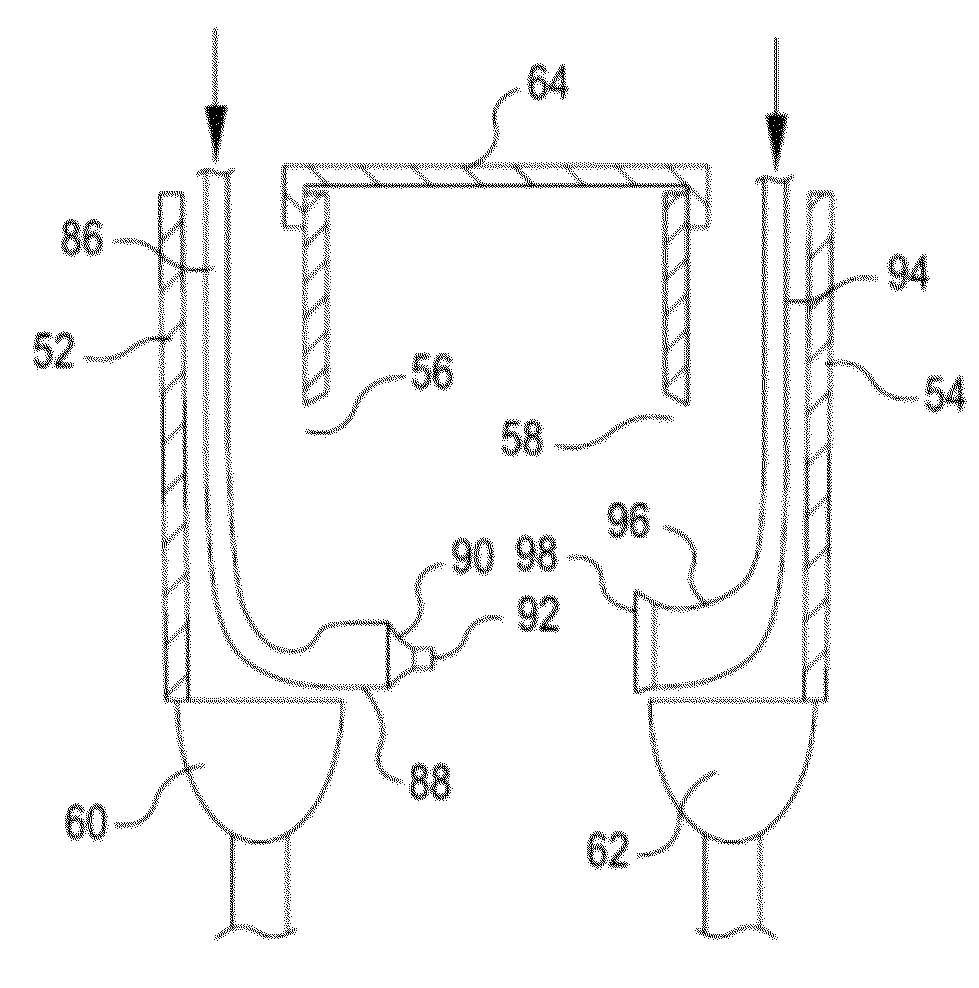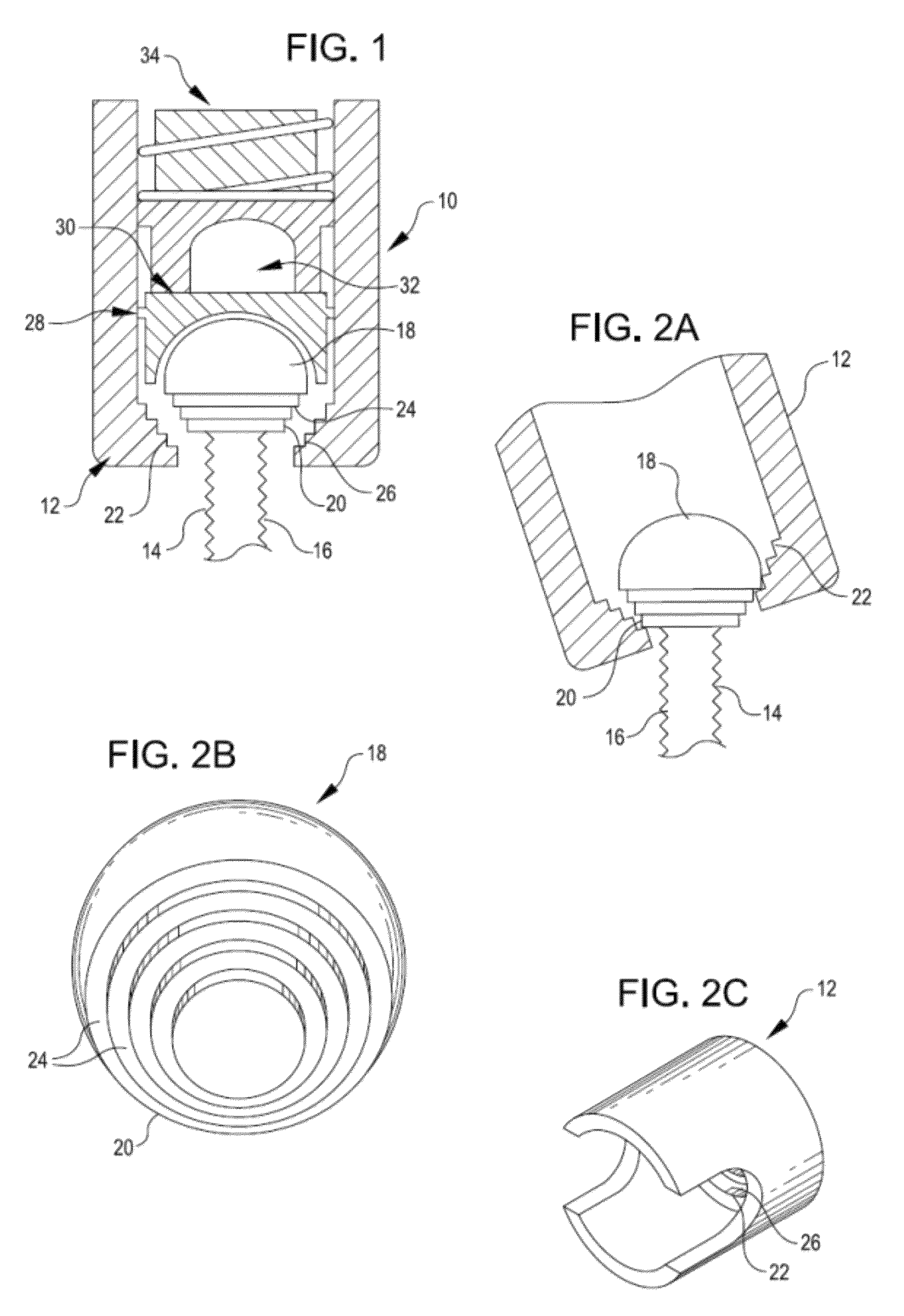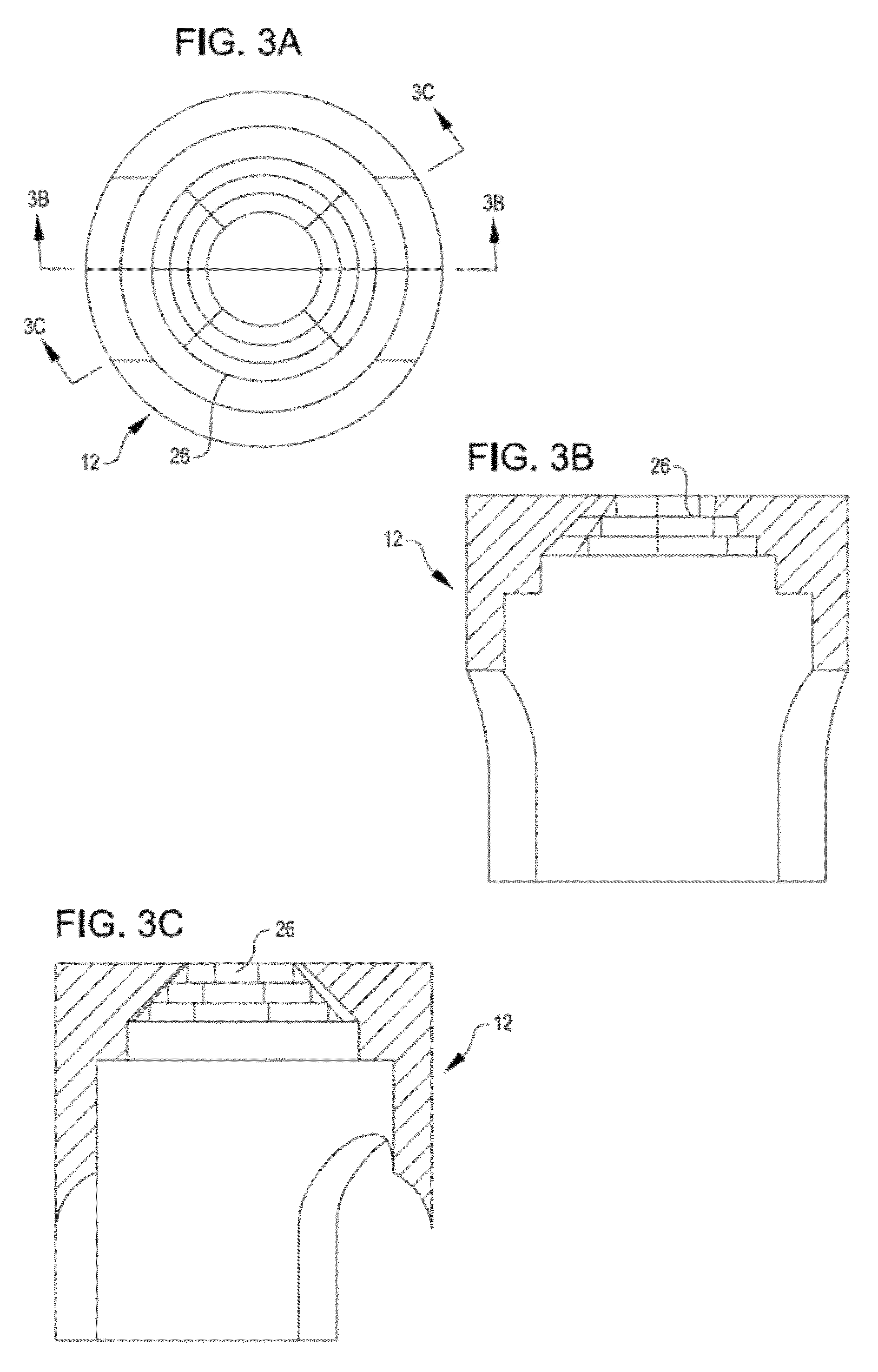Percutaneous system for dynamic spinal stabilization
a dynamic stabilization and percutaneous technology, applied in the field of spine disorders, can solve the problems of reducing recovery time and achieve the effects of reducing the amount of trauma to the patient, reducing the recovery time, and effective stabilizing two or more adjacent vertebra
- Summary
- Abstract
- Description
- Claims
- Application Information
AI Technical Summary
Benefits of technology
Problems solved by technology
Method used
Image
Examples
Embodiment Construction
[0031]In one embodiment, illustrated in FIGS. 1 and 2A-C, a bone anchoring assembly 10 is provided that comprises a receiving member 12 that is configured to receive and retain a spinal stabilization member, such as a rod or cord, to be extended between two or more vertebrae, together with a bone engaging member 14. Bone engaging member 14 comprises a generally elongated shank portion 16 and an enlarged head portion 18 located at a proximal end of shank portion 16. Shank portion 16 generally tapers towards its distal end and may be threaded to facilitate engagement in a bone, such as a vertebra. In the embodiment illustrated herein, shank portion 16 is threaded, however those of skill in the art will appreciate that other designs of shank portions may be effectively employed in the systems disclosed herein. Receiving member 12 is sized to receive and movably retain enlarged head portion 18 of bone engaging member 14 and may, for example, be tulip-shaped. Enlarged head portion 18 is ...
PUM
 Login to View More
Login to View More Abstract
Description
Claims
Application Information
 Login to View More
Login to View More - R&D
- Intellectual Property
- Life Sciences
- Materials
- Tech Scout
- Unparalleled Data Quality
- Higher Quality Content
- 60% Fewer Hallucinations
Browse by: Latest US Patents, China's latest patents, Technical Efficacy Thesaurus, Application Domain, Technology Topic, Popular Technical Reports.
© 2025 PatSnap. All rights reserved.Legal|Privacy policy|Modern Slavery Act Transparency Statement|Sitemap|About US| Contact US: help@patsnap.com



